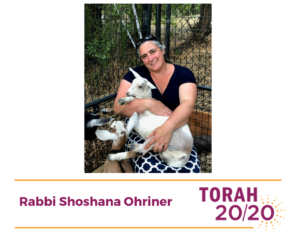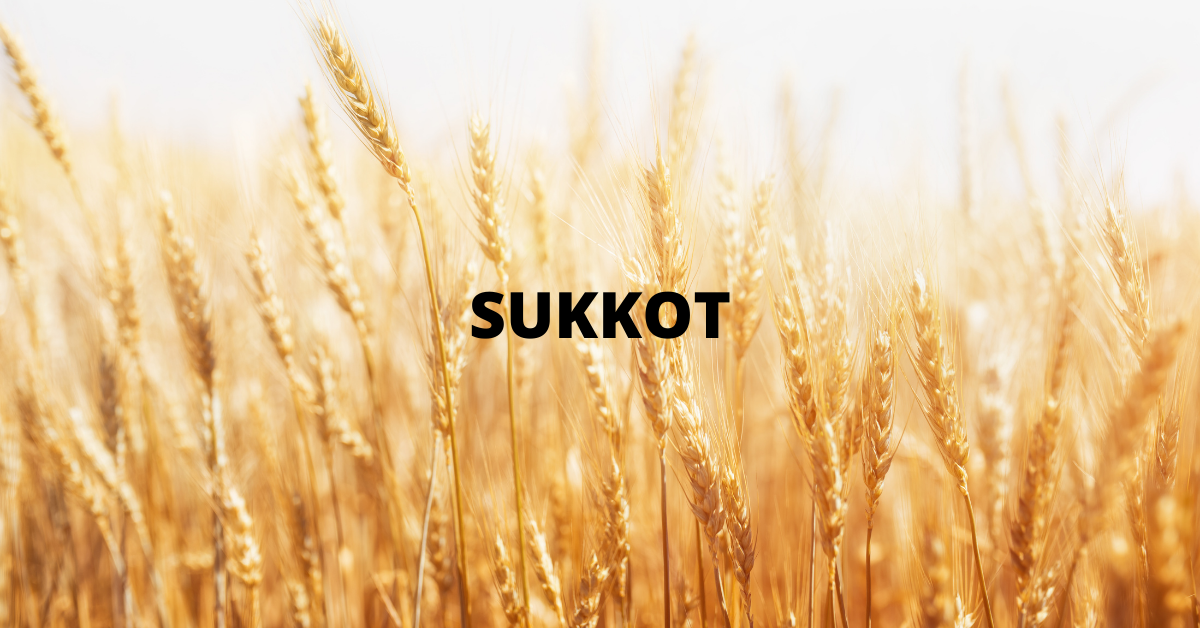A D’var Torah for Sukkot by Rabbi Shoshana Ohriner
Around this time of year it is my ritual to stop by the corn patch every morning on my way back from taking the goats out to pasture. I anxiously peek into a few ears of corn, checking on them as they mature. Each day I wonder if today needs to be the harvest. It is a delicate balance.
I want to give the corn as much time to grow as possible, but at the same time I am a part of an ecosystem that contains all kinds of creatures, big and small, who would love to make a meal of the corn before I get to it. This corn that we have been carefully tending throughout the growing season could provide us with cornmeal for the year or could become food for the wildlife. Every morning I feel the uncertainty of the harvest as I check that, for one more day, the crop is safe. The moment I see evidence the corn has ripened enough to be sought after by the wildlife, everyone jumps in to harvest. Once the corn is safely harvested, I can let go of the uncertainty. The harvest was successful this year, amidst so much uncertainty. Soon, the cycle will start up again. I will pull out the tomato, corn, squash, and cucumber plants that have already given us their bounty and replace them with our winter crops of kale, broccoli, carrots, beets, cauliflower, and all kinds of leafy greens. Even knowing how much work lies ahead, for the moment, I can dwell in the feeling of blessing that comes from a successful harvest.
Sign up to receive Torah 20/20 in your inbox each week.
This moment of pausing to experience the blessing of harvest is the core of Sukkot. As one of the three Jewish harvest festivals, Sukkot celebrates the end of the summer harvest. In some ways, it is a holiday of contradiction. We build temporary shelters and dwell outside as a reminder of our own fragility. Yet, the holiday of Sukkot also includes an obligation to be happy. We are enjoined to experience profound joy in the midst of recognizing the fragility of all our blessings. The shelter itself is cloaked in branches. The roof must be made of things that grow from the earth. We decorate the sukkah with evidence of the bountiful harvest, with gourds, fruits, and colorful corn.We see the fragility in all of that, and at the same time we put aside the uncertainty of the world as we envision ourselves dwelling within the protection of the Divine cloud.
Find more commentaries on Sukkot.
This year, as we approach Sukkot, the fragility of this world feels even more exposed. It isn’t just our own fragility we must face as we look up at the stars through the roof; it seems like the fate of the entire world is teetering on edge. Over the past weeks, as we looked up at the darkened red skies during the California fires while reading the unending news about ongoing injustice and suffering in our country, it was hard not to feel like the whole world was on fire. It is easy to spend our time consumed by all that must be fixed and the wrongs that must be righted. This work is essential, now more than ever. But this work is also exhausting. Just like the holiday of Sukkot, our world is also one of contradictions. There is good within all the chaos, although right now it might be hard to see. Sukkot reminds us to pause and notice the blessings that exist, even within this broken world. Sukkot is our communal letting out of the held breath. The moment where we can rest and simply dwell in the blessings that surround us.
 We have finished the harvest; our work is done for the moment. When the holiday is over we will resume our work, planting and cultivating the seeds of a better world and a better future for all. For now, during the days of Sukkot, we strive to appreciate our blessings, the bounty of the harvest, and the good dwelling within the fragility of uncertainty.
We have finished the harvest; our work is done for the moment. When the holiday is over we will resume our work, planting and cultivating the seeds of a better world and a better future for all. For now, during the days of Sukkot, we strive to appreciate our blessings, the bounty of the harvest, and the good dwelling within the fragility of uncertainty.
Rabbi Shoshana Ohriner is the co-founder of Ma’alot Farms in Northern California, a permaculture-based homestead committed to regenerative agriculture, environmental sustainability, and ecological regeneration.

